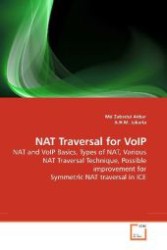- ホーム
- > 洋書
- > 英文書
- > History / World
Full Description
The Language of Russian Peasants in the Twentieth Century: A Linguistic Analysis and Oral History analyzes the social dialect of Russian peasants in the twentieth century through letters and stories that trace their tragic history. In 1900, there were 100,000,000 peasants in Russia, but by mid-century their language was no longer passed from parents to children, resulting in no speakers of the dialect left today.
In this study, Alexander D. Nakhimovsky argues that for all the variability of local dialects there was an underlying unity in them, which derived from their old shared traditions and oral nature. Their unity is best manifested in word formation, syntax, phraseology, and discourse.
Different social groups followed somewhat different paths through the maze of Soviet history, and peasants' path was one of the most painful. The chronological organization of the book and the analysis of powerful, concise, and simple but expressive language of peasant letters and stories culminate into an oral history of their tragic Soviet experience.
Contents
Chapter 1. The language of Russian peasants as a social dialect
1.1 Introduction: The language of peasants
1.2 Peasant language before 1917
1.3 Examples from Bogoraz, Tenishev
1.4 An initial generalization: the peasant language profile
1.5 A longer story from 1925
Conclusions
Chapter 2. Peasants and Bolsheviks, 1917-1928
2.1 Introduction: The impact of the revolution
2.2 Letters to power: long history pre-1905
2.3 The revolution of 1905 and new kinds of letters
2.4 Linguistic background: Phraseology, Formulaic language
2.5 Revolution and civil war, 1917-21
2.6 Bolshevik innovations and peasant attitudes
2.7 Available peasant materials, 1917-1921-1928
2.8 Directions of change
2.9 Categories and examples
Conclusions
Chapter 3. Personal letters 1939-1940
3.1 Introduction: the source and the background
3.2 Letters to the army and peasant moods
3.3 Personal letters as a genre: tradition, structure and formal elements
3.4 The source and the historical background
3.5 Examples of letters 1: three generations
3.6. Examples of letters 2: Old people
3.7 Examples of letters 3: Recent peasants and some success stories
3.8 The defining features of peasant letters
3.9 On literacy and letters from schoolchildren
3.10 Discourse and pragmatic features
3.11 Overlap and interpenetration with other social groups
3.12 Vocabulary, syntax, phraseology
Conclusions
Chapter 4. Scholars and narratives from the 1950s to today
4.1 A longer timeframe, the endangered language
4.2 Biographic narratives as historical testimony
4.3 Examples, grouped by history
4.4 The linguistics of peasant narratives
Conclusions: the unity of peasant language








